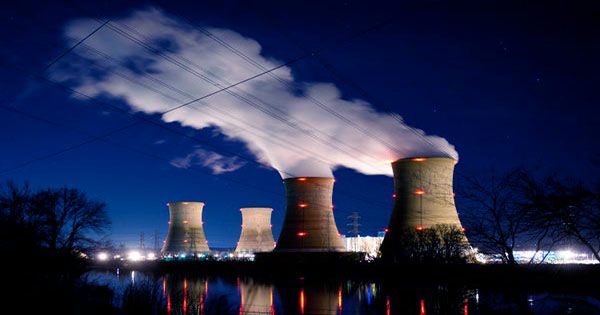The situation at the Chornobyl nuclear power station, which has been without power for more than a day, remains worrying, as the 210 technical workers and guards are held captive by Russian invading forces, unable to monitor the facility, obtain supplies, or rotate a new crew. THE CHERNOBYL POWER PLANT LOSES ITS EFFECTIVENESS, Following military activities by Russian forces, Ukraine’s national power company, Ukrenergo, declared yesterday that the Chornobyl Nuclear Electricity Plant is no longer linked to the power grid. The International Atomic Energy Agency (IAEA), a non-governmental organization dedicated to promoting nuclear cooperation and peace, is no longer receiving data from Chornobyl or the Zaporizhzhya nuclear power facility, which was also taken over by Russian forces.
While the absence of electricity is not a direct threat to safety, it is another concerning development in this rapidly deteriorating crisis. The IAEA Director General Rafael Mariano Grossi agreed with Ukrenergo’s assessment that the disconnection would have no immediate critical impact on the site’s safety functions, but the organization is concerned about the situation and the well-being of the people trapped inside the power plant for the past two weeks.

“Day by day, we are witnessing a deterioration of the situation at the Chornobyl NPP, particularly in terms of radiation safety and the people managing the plant under incredibly tough and stressful circumstances,” Grossi said in a statement. “I reiterate my urgent request to the plant’s effective control forces to follow internal radiation protection protocols, promote safe worker rotation, and adopt other critical safety measures.”
THE UKRAINE IS READY TO BEGIN CHERNOBYL REPAIRS, if a truce and a safe passage can be secured, Ukrenergo has stated on social media that it has a crew ready to repair the damage caused by Russian bombardment. Belarus President Alexander Lukashenko has also proposed sending specialists to repair the electric grid in the area surrounding the power plant, but Ukraine has rejected his proposal because Lukashenko allowed Russian troops to travel through Belarus to attack Ukraine, specifically the Chornobyl area. Ukrenergo’s statement adds, “We require a truce and the admittance of our repair workers, who have been waiting for an agreement to depart for repairs since yesterday.” “We are prepared to repair the lines as soon as possible and restore power to the Chornobyl nuclear power station, which has been without power for more than a day.” Stop shelling and let our workers finish their work!”
THERE IS NO IMMEDIATE DANGER, BUT THERE IS A LONG-TERM RISK, Chornobyl is the site of the world’s worst nuclear catastrophe, which claimed the lives of 30 people and shortened the lives of thousands more in 1986 as a result of radiation exposure. The power plant’s fuel rods that could be safely removed have been stored in a cooling bath to limit their natural radioactive decay during the previous two decades. Experts believe that without electricity, the water in the cooling ponds would drain completely, exposing the rods, which would take weeks, if not longer.
“I agree with the IAEA’s statement this morning that the spent fuel in Chernobyl’s storage ponds poses no significant concern, even with the current power loss,” “Professor Tom Scott of the University of Bristol in the United Kingdom weighed in. “Because the fuel in these pools is decades old, there is virtually little residual heat produced.” Because of the low heat load and the enormous volume of water in the cooling pools, the heat from the fuel may be safely dispersed even if there is no electricity to circulate the water.”
“Because the Chernobyl Power Plant has been shut down since 2000, the spent fuel rods that have been kept on site have been cooled for 22 years.” As a result, they will not produce considerable levels of heat, making a release of radiation extremely improbable,” stated Professor Geraldine Thomas, Director of the Chernobyl Tissue Bank at Imperial College London. The absence of monitoring within reactor 4, which was the location of the 1986 meltdown, is a major worry, as is the lack of ventilation in the New Safe Containment structure, which is critical to the facility’s eventual decommissioning. Damages to that, such as a fire, would be a huge setback in terms of making the facility and the surrounding region safe.
The security of those incarcerated there, as well as future employment circumstances, are important concerns. “I believe that the lack of ventilation will limit the site’s ability to handle radioactive dust and safeguard personnel, and that working conditions would deteriorate… “Until the electricity is restored, some portions of the facility may remain off bounds to the employees,” said Dr. Mark Foreman, Associate Professor of Nuclear Chemistry at Chalmers University of Technology in Sweden. “The plant’s personnel is comprised of highly skilled and devoted employees. “Rather than radiation, the greatest concern to their health is a lack of food and rest as a result of being unable to leave the facility,” Prof Thomas stated.
















